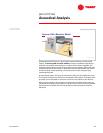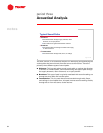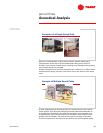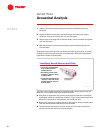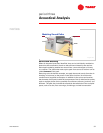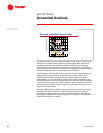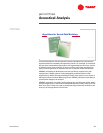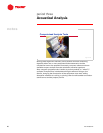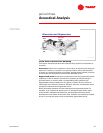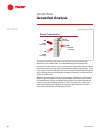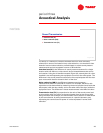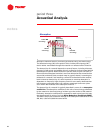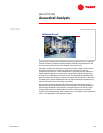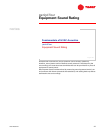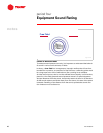
TRG-TRC007-EN 41
period three
Acoustical Analysis
notes
Terms Used in Sound-Path Modeling
This section introduces several terms that are fairly specific to the science of
acoustics.
Attenuation refers to the reduction in sound level as sound travels along the
path from a source to a receiver. It is typically used to refer to the reduction
of sound as it travels through a duct system. Straight ducts, elbows, junctions,
and silencers are examples of elements that attenuate sound.
Regenerated sound results from components of the duct system that create
turbulence in the air stream. Turbulence is caused by an abrupt change in
airflow direction or velocity with a corresponding static-pressure loss.
Regenerated sound increases with air velocity or when the air is forced to
make sharp turns. Elbows, junctions, diffusers, silencers, and dampers are all
examples of elements that regenerate sound.
Notice that some elements can both attenuate and regenerate sound. For
example, as air makes a 90-degree turn in a rectangular duct elbow, some
of the sound is reflected back upstream, attenuating the airborne sound
downstream of the elbow. At the same time, however, the turbulence created
by the air turning the sharp corner causes some regenerated sound.
Attenuation and Regeneration
supply
supply
duct
duct
return
return
duct
duct
diffuser
diffuser
heat pump
heat pump
(source)
(source)
return
return
-
-
air
air
grille
grille
Figure 46



